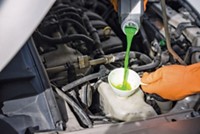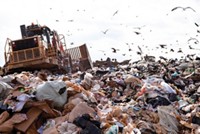Advertisement
Grab your lab coat. Let's get started
Welcome!
Welcome!
Create an account below to get 6 C&EN articles per month, receive newsletters and more - all free.
It seems this is your first time logging in online. Please enter the following information to continue.
As an ACS member you automatically get access to this site. All we need is few more details to create your reading experience.
Not you? Sign in with a different account.
Not you? Sign in with a different account.
ERROR 1
ERROR 1
ERROR 2
ERROR 2
ERROR 2
ERROR 2
ERROR 2
Password and Confirm password must match.
If you have an ACS member number, please enter it here so we can link this account to your membership. (optional)
ERROR 2
ACS values your privacy. By submitting your information, you are gaining access to C&EN and subscribing to our weekly newsletter. We use the information you provide to make your reading experience better, and we will never sell your data to third party members.
Environment
Making Better Trash Decisions
Waste Management: New tool to assess environmental impacts highlights the benefits of producing electricity through waste incineration
by Steven C. Powell
July 21, 2010

After you sort your household trash into various bins and drag it out to the curb, solid waste managers must next confront several options when disposing of the refuse. To minimize the disposal's environmental impact, they pick between three main fates: recycling, incineration, and landfills. Now researchers have devised a new way to assess the most efficient and environmentally sound way to handle the trash moving through a city's waste management system (Environmental Science & Technology; DOI: 10.1021/es100505u).
Normally when experts want to measure the environmental impact of a material or process, such as waste management, they turn to life cycle assessment (LCA). This quantitative tool does environmental bookkeeping based on many factors, such as the levels of greenhouse gases released, water consumed, pollutants created, and energy generated or expended. Unfortunately, this thorough accounting is time-consuming and far too complex for non-specialists to perform or interpret.
So environmental scientist Scott Kaufman of Columbia University and colleagues set out to create a simpler system that could accurately reproduce LCA's results and allow policymakers to easily pinpoint the best practices for their communities.
The researchers started by calculating the energetic cost of commonly discarded materials, such as newspaper, polypropylene, and aluminum, based on each of the three different end-of-life scenarios. They found that in these calculations, the cumulative energy demand, a measure of the material's total energetic cost from production to use to disposal, closely mirrored the more comprehensive LCA scores. So they decided to use easier-to-calculate energy scores as a proxy for LCA values.
With a LCA stand-in, the scientists could then measure a waste management system's efficiency. Not all materials can be recycled or incinerated, so managers have to make tough decisions. And each fate has a different energy consequence: Recycling saves energy, incineration generates energy, and tossing the material into a landfill produces the least amount of energy or even none at all. To analyze these decisions for each product, the researchers calculated the fraction of energy that the system actually extracts from the waste compared to the output generated by the best possible decision.
Kaufman and colleagues applied this analysis to the decisions made by waste management systems in San Francisco and Honolulu. Although San Francisco has a better recycling rate, the researchers estimated that Honolulu's system overall is about 20% more efficient than San Francisco's. The key difference is incineration: Honolulu has a comprehensive waste-to-energy incineration policy, while San Francisco doesn't incinerate at all. But Honolulu also could improve its efficiency by raising its recycling rate. With these changes, both cities could recover 90% of the total possible energy trapped in their trash.
Yale University's Reid Lifset, editor of Journal of Industrial Ecology, says that basing the benchmark "on cumulative energy demand is clever. It draws attention to what happens to the waste that isn't or can't be recycled."





Join the conversation
Contact the reporter
Submit a Letter to the Editor for publication
Engage with us on Twitter